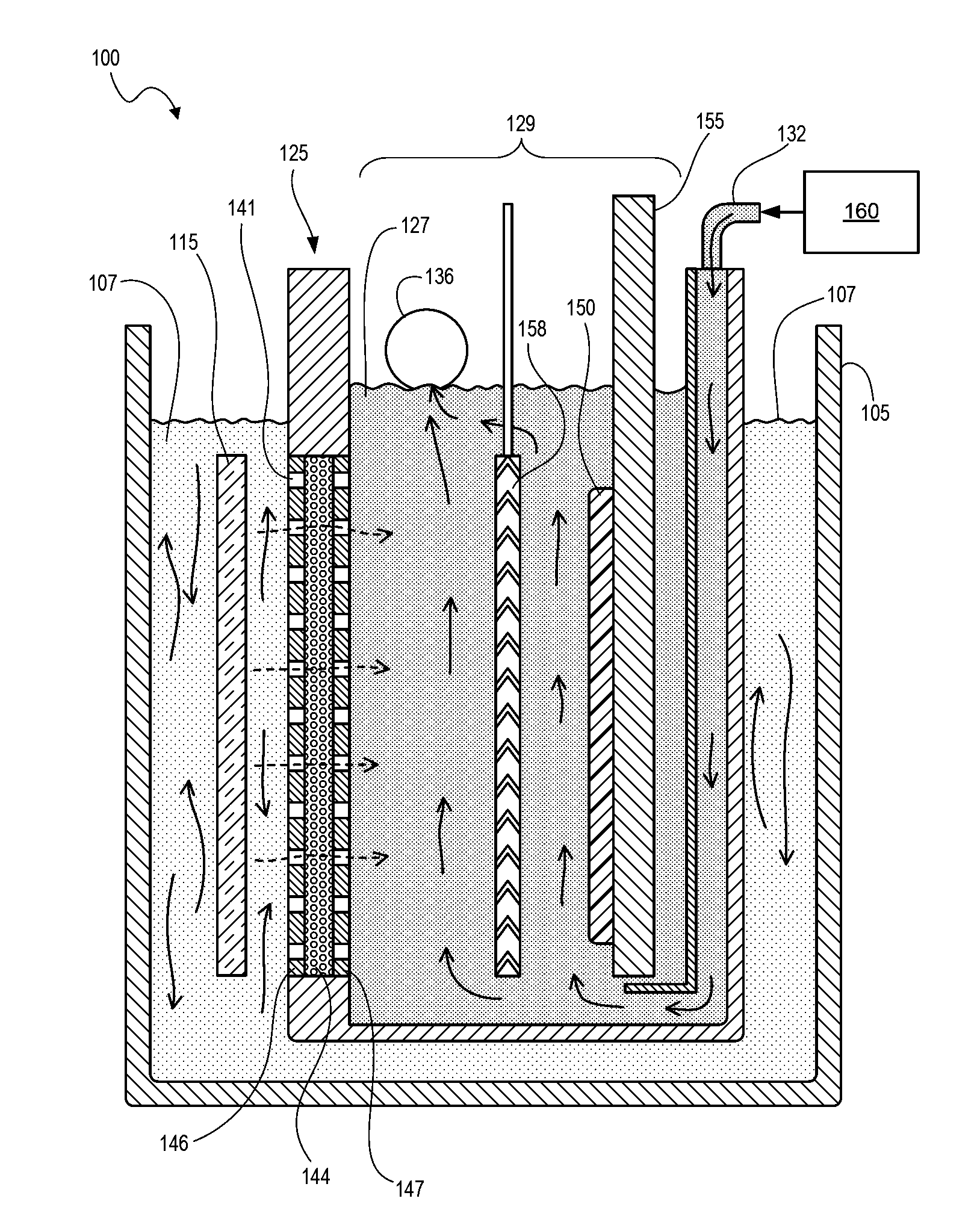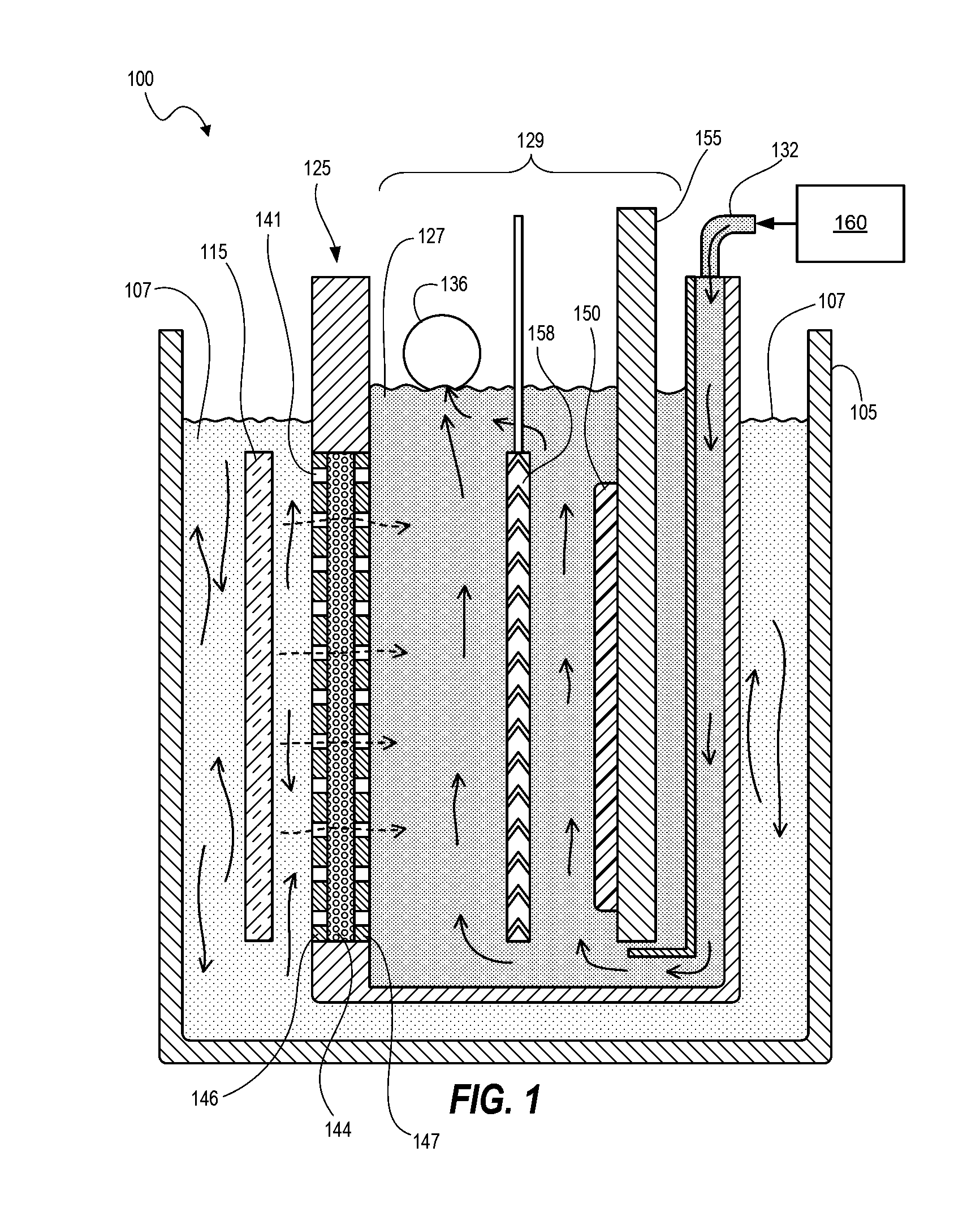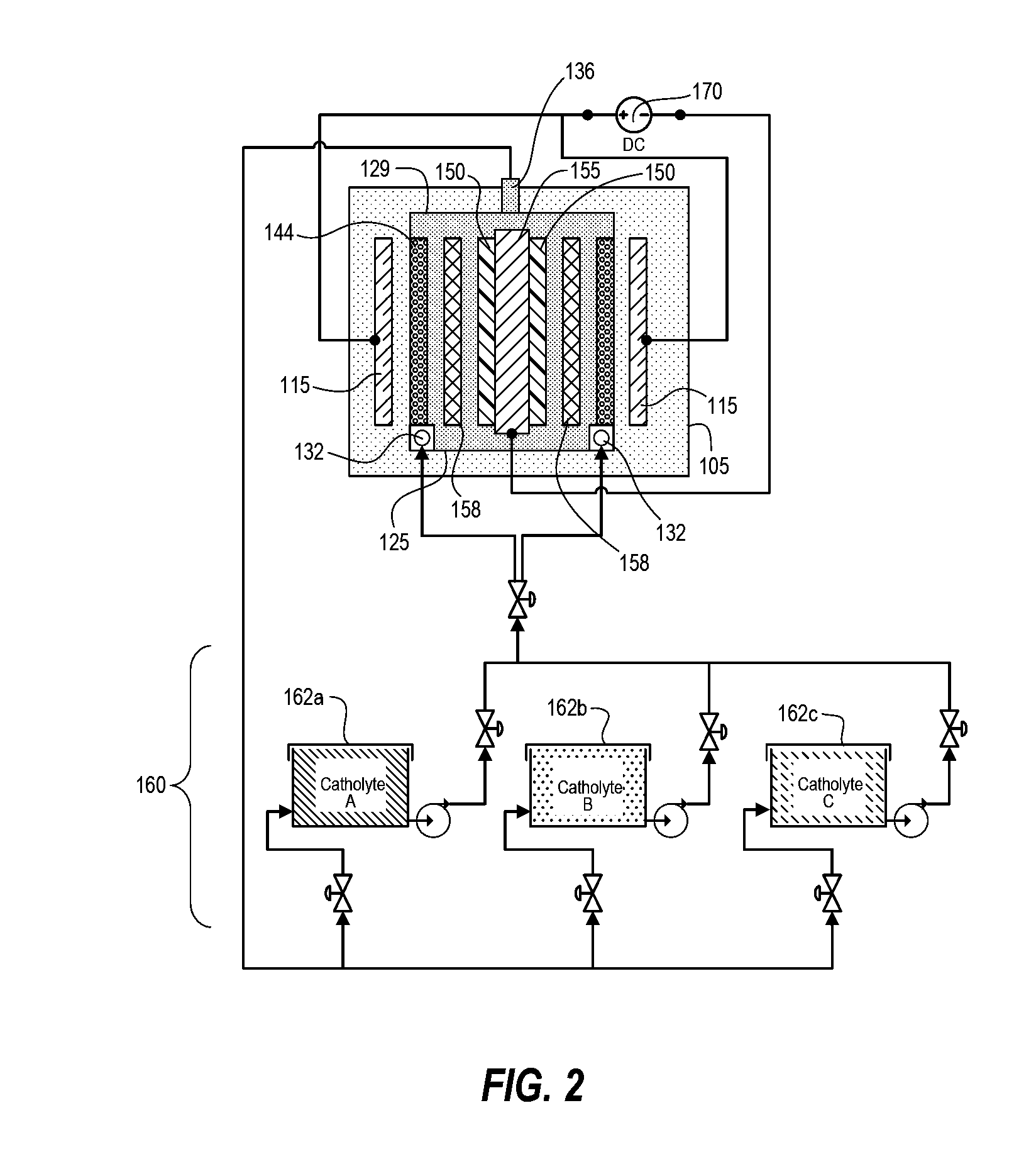Electrochemical deposition apparatus with remote catholyte fluid management
a technology of catholyte fluid management and electrochemical deposition equipment, which is applied in the direction of electrolysis process, electrolysis components, semiconductor devices, etc., can solve the problems of inconvenient operation, large amount of equipment, and inconvenient maintenance, so as to facilitate the management of metal concentration and eliminate the cost and complexity.
- Summary
- Abstract
- Description
- Claims
- Application Information
AI Technical Summary
Benefits of technology
Problems solved by technology
Method used
Image
Examples
Embodiment Construction
[0020]Techniques disclosed herein include an electro-chemical deposition apparatus that provides a simplified circulation system, better chemical management for more reliable and uniform plating, as well as short maintenance times for greater tool availability. Techniques include a processing tank containing an anolyte fluid, and one or more plating cells each having a catholyte fluid compartment having a circulation path that connects to a separate or remote catholyte reservoir. The anolyte fluid is not the process electrolyte and needs substantially less maintenance as compared to the catholyte fluid that needs constant replenishment of metal ions and other additives. Thus, with such a configuration as disclosed herein, a single pump can be used to flow catholyte (via manifolds) through one or more plating cells. The anolyte fluid in the processing tank can circulate via inherent fluid diffusion, or the apparatus can include an optional flow mechanism in the processing tank such a...
PUM
| Property | Measurement | Unit |
|---|---|---|
| time | aaaaa | aaaaa |
| distance | aaaaa | aaaaa |
| current | aaaaa | aaaaa |
Abstract
Description
Claims
Application Information
 Login to View More
Login to View More - R&D
- Intellectual Property
- Life Sciences
- Materials
- Tech Scout
- Unparalleled Data Quality
- Higher Quality Content
- 60% Fewer Hallucinations
Browse by: Latest US Patents, China's latest patents, Technical Efficacy Thesaurus, Application Domain, Technology Topic, Popular Technical Reports.
© 2025 PatSnap. All rights reserved.Legal|Privacy policy|Modern Slavery Act Transparency Statement|Sitemap|About US| Contact US: help@patsnap.com



